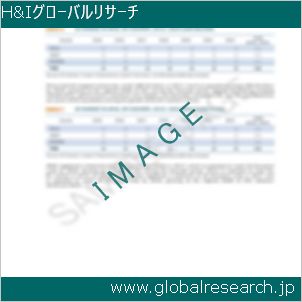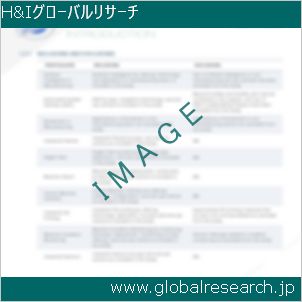1 Market Overview
1.1 Meso-Micro Porous Carbon Materials Introduction
1.2 Market Analysis by Type
1.2.1 Overview: Global Meso-Micro Porous Carbon Materials Revenue by Type: 2017 Versus 2021 Versus 2028
1.2.2 Microporous Materials (Less than 2 nm)
1.2.3 Mesoporous Materials (2-50 nm)
1.3 Market Analysis by Application
1.3.1 Overview: Global Meso-Micro Porous Carbon Materials Revenue by Application: 2017 Versus 2021 Versus 2028
1.3.2 Refining and Petrochemicals
1.3.3 Water Treatment
1.3.4 Air Purification
1.3.5 Mercury Control
1.3.6 Agriculture and Aquaculture
1.3.7 Food & Beverages
1.3.8 Industrial Processes
1.3.9 Medical & Pharmaceuticals
1.3.10 Others
1.4 Global Meso-Micro Porous Carbon Materials Market Size & Forecast
1.4.1 Global Meso-Micro Porous Carbon Materials Sales in Value (2017 & 2021 & 2028)
1.4.2 Global Meso-Micro Porous Carbon Materials Sales in Volume (2017-2028)
1.4.3 Global Meso-Micro Porous Carbon Materials Price (2017-2028)
1.5 Global Meso-Micro Porous Carbon Materials Production Capacity Analysis
1.5.1 Global Meso-Micro Porous Carbon Materials Total Production Capacity (2017-2028)
1.5.2 Global Meso-Micro Porous Carbon Materials Production Capacity by Geographic Region
1.6 Market Drivers, Restraints and Trends
1.6.1 Meso-Micro Porous Carbon Materials Market Drivers
1.6.2 Meso-Micro Porous Carbon Materials Market Restraints
1.6.3 Meso-Micro Porous Carbon Materials Trends Analysis
2 Manufacturers Profiles
2.1 Kuraray
2.1.1 Kuraray Details
2.1.2 Kuraray Major Business
2.1.3 Kuraray Meso-Micro Porous Carbon Materials Product and Services
2.1.4 Kuraray Meso-Micro Porous Carbon Materials Sales, Price, Revenue, Gross Margin and Market Share (2019, 2020, 2021, and 2022)
2.2 BASF
2.2.1 BASF Details
2.2.2 BASF Major Business
2.2.3 BASF Meso-Micro Porous Carbon Materials Product and Services
2.2.4 BASF Meso-Micro Porous Carbon Materials Sales, Price, Revenue, Gross Margin and Market Share (2019, 2020, 2021, and 2022)
2.3 Cabot Norit
2.3.1 Cabot Norit Details
2.3.2 Cabot Norit Major Business
2.3.3 Cabot Norit Meso-Micro Porous Carbon Materials Product and Services
2.3.4 Cabot Norit Meso-Micro Porous Carbon Materials Sales, Price, Revenue, Gross Margin and Market Share (2019, 2020, 2021, and 2022)
2.4 Jacobi Carbons
2.4.1 Jacobi Carbons Details
2.4.2 Jacobi Carbons Major Business
2.4.3 Jacobi Carbons Meso-Micro Porous Carbon Materials Product and Services
2.4.4 Jacobi Carbons Meso-Micro Porous Carbon Materials Sales, Price, Revenue, Gross Margin and Market Share (2019, 2020, 2021, and 2022)
2.5 Ingevity Corporation
2.5.1 Ingevity Corporation Details
2.5.2 Ingevity Corporation Major Business
2.5.3 Ingevity Corporation Meso-Micro Porous Carbon Materials Product and Services
2.5.4 Ingevity Corporation Meso-Micro Porous Carbon Materials Sales, Price, Revenue, Gross Margin and Market Share (2019, 2020, 2021, and 2022)
2.6 Dow Corning
2.6.1 Dow Corning Details
2.6.2 Dow Corning Major Business
2.6.3 Dow Corning Meso-Micro Porous Carbon Materials Product and Services
2.6.4 Dow Corning Meso-Micro Porous Carbon Materials Sales, Price, Revenue, Gross Margin and Market Share (2019, 2020, 2021, and 2022)
2.7 Wacker Chemicals
2.7.1 Wacker Chemicals Details
2.7.2 Wacker Chemicals Major Business
2.7.3 Wacker Chemicals Meso-Micro Porous Carbon Materials Product and Services
2.7.4 Wacker Chemicals Meso-Micro Porous Carbon Materials Sales, Price, Revenue, Gross Margin and Market Share (2019, 2020, 2021, and 2022)
2.8 Shin-Etsu
2.8.1 Shin-Etsu Details
2.8.2 Shin-Etsu Major Business
2.8.3 Shin-Etsu Meso-Micro Porous Carbon Materials Product and Services
2.8.4 Shin-Etsu Meso-Micro Porous Carbon Materials Sales, Price, Revenue, Gross Margin and Market Share (2019, 2020, 2021, and 2022)
2.9 Momentive Performance Materials
2.9.1 Momentive Performance Materials Details
2.9.2 Momentive Performance Materials Major Business
2.9.3 Momentive Performance Materials Meso-Micro Porous Carbon Materials Product and Services
2.9.4 Momentive Performance Materials Meso-Micro Porous Carbon Materials Sales, Price, Revenue, Gross Margin and Market Share (2019, 2020, 2021, and 2022)
2.10 Honeywell International
2.10.1 Honeywell International Details
2.10.2 Honeywell International Major Business
2.10.3 Honeywell International Meso-Micro Porous Carbon Materials Product and Services
2.10.4 Honeywell International Meso-Micro Porous Carbon Materials Sales, Price, Revenue, Gross Margin and Market Share (2019, 2020, 2021, and 2022)
2.11 Axens
2.11.1 Axens Details
2.11.2 Axens Major Business
2.11.3 Axens Meso-Micro Porous Carbon Materials Product and Services
2.11.4 Axens Meso-Micro Porous Carbon Materials Sales, Price, Revenue, Gross Margin and Market Share (2019, 2020, 2021, and 2022)
2.12 CECA (Arkema)
2.12.1 CECA (Arkema) Details
2.12.2 CECA (Arkema) Major Business
2.12.3 CECA (Arkema) Meso-Micro Porous Carbon Materials Product and Services
2.12.4 CECA (Arkema) Meso-Micro Porous Carbon Materials Sales, Price, Revenue, Gross Margin and Market Share (2019, 2020, 2021, and 2022)
2.13 Zeolyst
2.13.1 Zeolyst Details
2.13.2 Zeolyst Major Business
2.13.3 Zeolyst Meso-Micro Porous Carbon Materials Product and Services
2.13.4 Zeolyst Meso-Micro Porous Carbon Materials Sales, Price, Revenue, Gross Margin and Market Share (2019, 2020, 2021, and 2022)
2.14 Fujian Yuanli Active Carbon
2.14.1 Fujian Yuanli Active Carbon Details
2.14.2 Fujian Yuanli Active Carbon Major Business
2.14.3 Fujian Yuanli Active Carbon Meso-Micro Porous Carbon Materials Product and Services
2.14.4 Fujian Yuanli Active Carbon Meso-Micro Porous Carbon Materials Sales, Price, Revenue, Gross Margin and Market Share (2019, 2020, 2021, and 2022)
2.15 Gelest
2.15.1 Gelest Details
2.15.2 Gelest Major Business
2.15.3 Gelest Meso-Micro Porous Carbon Materials Product and Services
2.15.4 Gelest Meso-Micro Porous Carbon Materials Sales, Price, Revenue, Gross Margin and Market Share (2019, 2020, 2021, and 2022)
2.16 ADA-ES
2.16.1 ADA-ES Details
2.16.2 ADA-ES Major Business
2.16.3 ADA-ES Meso-Micro Porous Carbon Materials Product and Services
2.16.4 ADA-ES Meso-Micro Porous Carbon Materials Sales, Price, Revenue, Gross Margin and Market Share (2019, 2020, 2021, and 2022)
2.17 Haycarb
2.17.1 Haycarb Details
2.17.2 Haycarb Major Business
2.17.3 Haycarb Meso-Micro Porous Carbon Materials Product and Services
2.17.4 Haycarb Meso-Micro Porous Carbon Materials Sales, Price, Revenue, Gross Margin and Market Share (2019, 2020, 2021, and 2022)
2.18 Clariant
2.18.1 Clariant Details
2.18.2 Clariant Major Business
2.18.3 Clariant Meso-Micro Porous Carbon Materials Product and Services
2.18.4 Clariant Meso-Micro Porous Carbon Materials Sales, Price, Revenue, Gross Margin and Market Share (2019, 2020, 2021, and 2022)
2.19 CHALCO
2.19.1 CHALCO Details
2.19.2 CHALCO Major Business
2.19.3 CHALCO Meso-Micro Porous Carbon Materials Product and Services
2.19.4 CHALCO Meso-Micro Porous Carbon Materials Sales, Price, Revenue, Gross Margin and Market Share (2019, 2020, 2021, and 2022)
2.20 Huber
2.20.1 Huber Details
2.20.2 Huber Major Business
2.20.3 Huber Meso-Micro Porous Carbon Materials Product and Services
2.20.4 Huber Meso-Micro Porous Carbon Materials Sales, Price, Revenue, Gross Margin and Market Share (2019, 2020, 2021, and 2022)
2.21 Zeochem AG
2.21.1 Zeochem AG Details
2.21.2 Zeochem AG Major Business
2.21.3 Zeochem AG Meso-Micro Porous Carbon Materials Product and Services
2.21.4 Zeochem AG Meso-Micro Porous Carbon Materials Sales, Price, Revenue, Gross Margin and Market Share (2019, 2020, 2021, and 2022)
3 Meso-Micro Porous Carbon Materials Breakdown Data by Manufacturer
3.1 Global Meso-Micro Porous Carbon Materials Sales in Volume by Manufacturer (2019, 2020, 2021, and 2022)
3.2 Global Meso-Micro Porous Carbon Materials Revenue by Manufacturer (2019, 2020, 2021, and 2022)
3.3 Key Manufacturer Market Position in Meso-Micro Porous Carbon Materials
3.4 Market Concentration Rate
3.4.1 Top 3 Meso-Micro Porous Carbon Materials Manufacturer Market Share in 2021
3.4.2 Top 6 Meso-Micro Porous Carbon Materials Manufacturer Market Share in 2021
3.5 Global Meso-Micro Porous Carbon Materials Production Capacity by Company: 2021 VS 2022
3.6 Manufacturer by Geography: Head Office and Meso-Micro Porous Carbon Materials Production Site
3.7 New Entrant and Capacity Expansion Plans
3.8 Mergers & Acquisitions
4 Market Analysis by Region
4.1 Global Meso-Micro Porous Carbon Materials Market Size by Region
4.1.1 Global Meso-Micro Porous Carbon Materials Sales in Volume by Region (2017-2028)
4.1.2 Global Meso-Micro Porous Carbon Materials Revenue by Region (2017-2028)
4.2 North America Meso-Micro Porous Carbon Materials Revenue (2017-2028)
4.3 Europe Meso-Micro Porous Carbon Materials Revenue (2017-2028)
4.4 Asia-Pacific Meso-Micro Porous Carbon Materials Revenue (2017-2028)
4.5 South America Meso-Micro Porous Carbon Materials Revenue (2017-2028)
4.6 Middle East and Africa Meso-Micro Porous Carbon Materials Revenue (2017-2028)
5 Market Segment by Type
5.1 Global Meso-Micro Porous Carbon Materials Sales in Volume by Type (2017-2028)
5.2 Global Meso-Micro Porous Carbon Materials Revenue by Type (2017-2028)
5.3 Global Meso-Micro Porous Carbon Materials Price by Type (2017-2028)
6 Market Segment by Application
6.1 Global Meso-Micro Porous Carbon Materials Sales in Volume by Application (2017-2028)
6.2 Global Meso-Micro Porous Carbon Materials Revenue by Application (2017-2028)
6.3 Global Meso-Micro Porous Carbon Materials Price by Application (2017-2028)
7 North America by Country, by Type, and by Application
7.1 North America Meso-Micro Porous Carbon Materials Sales by Type (2017-2028)
7.2 North America Meso-Micro Porous Carbon Materials Sales by Application (2017-2028)
7.3 North America Meso-Micro Porous Carbon Materials Market Size by Country
7.3.1 North America Meso-Micro Porous Carbon Materials Sales in Volume by Country (2017-2028)
7.3.2 North America Meso-Micro Porous Carbon Materials Revenue by Country (2017-2028)
7.3.3 United States Market Size and Forecast (2017-2028)
7.3.4 Canada Market Size and Forecast (2017-2028)
7.3.5 Mexico Market Size and Forecast (2017-2028)
8 Europe by Country, by Type, and by Application
8.1 Europe Meso-Micro Porous Carbon Materials Sales by Type (2017-2028)
8.2 Europe Meso-Micro Porous Carbon Materials Sales by Application (2017-2028)
8.3 Europe Meso-Micro Porous Carbon Materials Market Size by Country
8.3.1 Europe Meso-Micro Porous Carbon Materials Sales in Volume by Country (2017-2028)
8.3.2 Europe Meso-Micro Porous Carbon Materials Revenue by Country (2017-2028)
8.3.3 Germany Market Size and Forecast (2017-2028)
8.3.4 France Market Size and Forecast (2017-2028)
8.3.5 United Kingdom Market Size and Forecast (2017-2028)
8.3.6 Russia Market Size and Forecast (2017-2028)
8.3.7 Italy Market Size and Forecast (2017-2028)
9 Asia-Pacific by Region, by Type, and by Application
9.1 Asia-Pacific Meso-Micro Porous Carbon Materials Sales by Type (2017-2028)
9.2 Asia-Pacific Meso-Micro Porous Carbon Materials Sales by Application (2017-2028)
9.3 Asia-Pacific Meso-Micro Porous Carbon Materials Market Size by Region
9.3.1 Asia-Pacific Meso-Micro Porous Carbon Materials Sales in Volume by Region (2017-2028)
9.3.2 Asia-Pacific Meso-Micro Porous Carbon Materials Revenue by Region (2017-2028)
9.3.3 China Market Size and Forecast (2017-2028)
9.3.4 Japan Market Size and Forecast (2017-2028)
9.3.5 Korea Market Size and Forecast (2017-2028)
9.3.6 India Market Size and Forecast (2017-2028)
9.3.7 Southeast Asia Market Size and Forecast (2017-2028)
9.3.8 Australia Market Size and Forecast (2017-2028)
10 South America by Region, by Type, and by Application
10.1 South America Meso-Micro Porous Carbon Materials Sales by Type (2017-2028)
10.2 South America Meso-Micro Porous Carbon Materials Sales by Application (2017-2028)
10.3 South America Meso-Micro Porous Carbon Materials Market Size by Country
10.3.1 South America Meso-Micro Porous Carbon Materials Sales in Volume by Country (2017-2028)
10.3.2 South America Meso-Micro Porous Carbon Materials Revenue by Country (2017-2028)
10.3.3 Brazil Market Size and Forecast (2017-2028)
10.3.4 Argentina Market Size and Forecast (2017-2028)
11 Middle East & Africa by Country, by Type, and by Application
11.1 Middle East & Africa Meso-Micro Porous Carbon Materials Sales by Type (2017-2028)
11.2 Middle East & Africa Meso-Micro Porous Carbon Materials Sales by Application (2017-2028)
11.3 Middle East & Africa Meso-Micro Porous Carbon Materials Market Size by Country
11.3.1 Middle East & Africa Meso-Micro Porous Carbon Materials Sales in Volume by Country (2017-2028)
11.3.2 Middle East & Africa Meso-Micro Porous Carbon Materials Revenue by Country (2017-2028)
11.3.3 Turkey Market Size and Forecast (2017-2028)
11.3.4 Egypt Market Size and Forecast (2017-2028)
11.3.5 Saudi Arabia Market Size and Forecast (2017-2028)
11.3.6 South Africa Market Size and Forecast (2017-2028)
12 Raw Material and Industry Chain
12.1 Raw Material of Meso-Micro Porous Carbon Materials and Key Manufacturers
12.2 Manufacturing Costs Percentage of Meso-Micro Porous Carbon Materials
12.3 Meso-Micro Porous Carbon Materials Production Process
12.4 Meso-Micro Porous Carbon Materials Industrial Chain
13 Sales Channel, Distributors, Traders and Dealers
13.1 Sales Channel
13.1.1 Direct Marketing
13.1.2 Indirect Marketing
13.2 Meso-Micro Porous Carbon Materials Typical Distributors
13.3 Meso-Micro Porous Carbon Materials Typical Customers
14 Research Findings and Conclusion
15 Appendix
15.1 Methodology
15.2 Research Process and Data Source
15.3 Disclaimer
❖ 免責事項 ❖
http://www.globalresearch.jp/disclaimer


